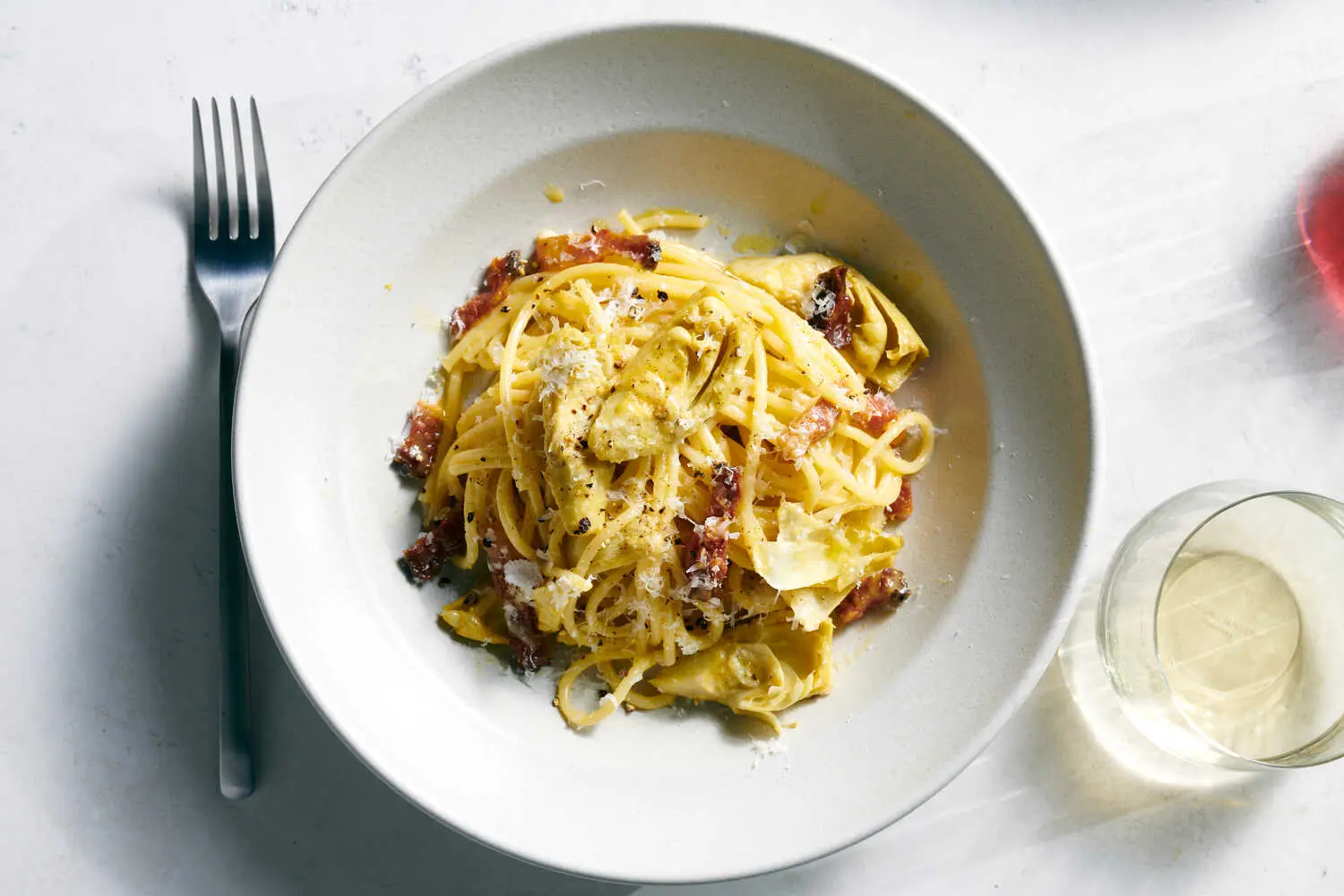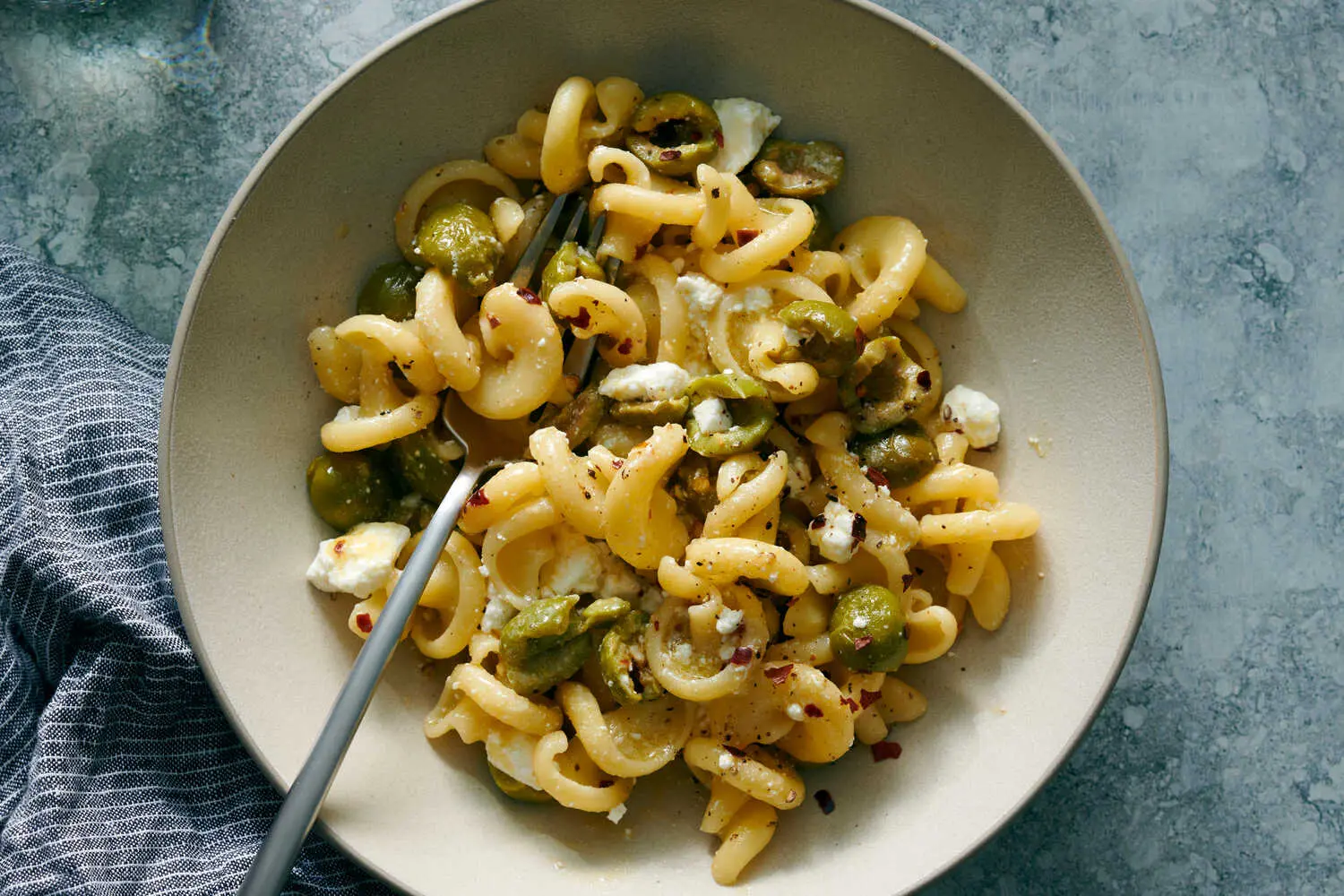The ordinariness of pasta
- rosemary
- Mar 13
- 6 min read
"Every day millions of us are united in doing the same thing. We take a packet of pasta from the shelf, we tip the shapes into boiling water, we make something to eat." Rachel Roddy

The picture above - Pasta with fresh herbs, lemon and peas is from my New York Times recipe desk calendar. The author of the recipe is Martha Rose Shulman. It's today's recipe. What struck me as I turned it over and saw it was, now how ordinary is that? Surely we have all seen such a recipe before? We've probably even made a similar one, so how come The New York Times - a prestigious newspaper, and I think the author is well know as well - the name is vaguely familiar - how come they can dare to proffer something so ordinary as something worth our attention?
Well of course it does deserve our attention, if only for the skill of the photographer and the food stylist in making it look so fresh and delicious. And probably because it is indeed something a novice cook could think they have a go at. And indeed they could. You just chop some herbs, and mix them with lemon juice and zest and olive oil. Cook your pasta, and peas in the last few minutes of cooking. Slosh a bit of the pasta water into the herb mix and toss the pasta and peas with it. I suspect that's not what they've done in that picture. It looks too dry to me. But easy.
It got my attention because it brought home to me how a dish that once upon a time would have been incredibly exotic to me, is now so everyday, that I think it's really a bit to be despised - how dare they think this is gourmet food? How did we get to this? How did we get to the point that Rachel Roddy can rightly say that everyday millions of us - around the entire world put on a pot of boiling water in which to cook pasta?
We know that pasta is ancient. We know that the British had a recipe for a kind of lasagne made with a kind of bread pasta in their first cookbok A Forme of Cury, written in the 1390s:

"Take good broth and do in an earthen pot. Take flour of payndemayn [high quality white bread] and make thereof past[e] with water, and make therof thynne foyles as paper with a roller; drye it hard and seeth [simmer] it in broth. Take chese ruayn grated and lay it in dishes with powdour douce [a mix of warm spices such as cinnamon, cloves etc], and lay on the loseyns [the pasta sheets] isode as hole as thou myst, and above powdour and chese; and so twyce or thrice [i.e. layer it up], & serve it forth." 1390s Forme of Cury - Neil Buttery/British Food: a History
We know that it was probably the Arabs who brought noodles/pasta to Sicily. We know that the mass immigration of Italians to America in the 19th century led to that country's love affair with pasta - mac 'n' cheese was invented there and industrialised there as well. We know that the British knew about pasta from the 18th century and also that it didn't really appear in everyday cooking until after rationing ended in the mid 1950s, but as well as supply restraints we also know that there was a cultural problem:
"In those days the chef was supposed to be French and the Italians just the washers-up." Simone Lavarini who opened one of Britain's first Italian restaurants in 1955
So maybe it really became so popular once ordinary people began to travel and the Italians began to spread themselves around the world. Maybe it really is because we love the mythical Italian joie de vivre and family ties so much that we associated it with their pasta. Maybe it's because people became interested in cooking and Elizabeth David et al. started writing books about exotic food from elsewhere. We wanted the good life after the grimness of the war years.
Today an Oxfam survey found that pasta is the most popular food in the world - Venezuela of all places is the second largest consumer of pasta after the Italians. And really it's easy to see why:
"there are good reasons for pasta's growth in popularity. "It is quick and easy to cook and goes with just about everything. But it also comes in a lot of different varieties, so there is something for everyone. It's good food but it's also classless in a way. If you've got a lot of money you can try something really fancy. If you don't you can just have spaghetti." Tony de Angeli/BBC
It's also a good thing to start with if you are learnng to cook:
"In order to create a little bit of confidence, start cooking with pasta. Pasta is phenomenal. Once you've cooked pasta properly for the first time it becomes second nature." Gordon Ramsay
although you also need to learn a sauce:
"If kids can learn how to make a simple Bolognese sauce, they will never go hungry. It's pretty easy to cook pasta, but a good sauce is way more useful." Emeril Lagasse
Indeed the very first time I cooked pasta was with my mother from a recipe in a women's magazine for spaghetti bolognaise. So exotic. Now so ordinary as the example below from Coles' latest magazine - Bolognese with pappardelle shows. It's a particularly good example as it's a recipe that promotes various products - I'm sure they paid for the page and the recipe - demonstrating the range of products, from an 'authentic' Italian pasta, and sauce Spanish olive oil, and just to demonstrate how ordinary and everyday this dish is, they have added in Pepsi for good measure. The only extras you need are Coles beef and pork bolognese mince and some basil. Oh - and Parmesan.

Every supermarket magazine will have more than one pasta recipe. This month's Coles Magazine has three more - Spicy Italian style sausage pasta; Baked feta and veggie pasta - not quite the same baked feta pasta I talked about the other day but another demonstration of the trend beginning to vary and Tuna and lemon pasta - a pasta devised to advertise it's new base home brand range - the Simply Coles products. The recipe is not online, but you can read it in the circle if you click on the picture.
It's to supermarket magazines that ordinary people turn in order to find something, quick, easy and economical to cook for their families, and the dishes above are excellent examples of what kinds of pasta dishes every family eats these days. The finished dish may not look quite as photogenic but I'm guess ing that it would be just as tasty.
So is The New York Times the same or is it posher? It's certainly just as prolific in its pasta recipes. In the past month or so there have been several. The one I began with is honestly much the same as the Coles Magazine examples - pretty ordinary really. At least in the sense of not being something new, or something unachievable by ordinary mortals. The other two most recent examples are I guess a little more exotic if not difficult - Artichoke carbonara/Anna Francese Gass, and Pasta with feta and green olives/Yasmin Fahr.
They are only a little bit exotic though. Perhaps marginally outside the normal cook's range of ingredients. The methods would be familiar however.
So what a very long way we have come from those days of getting excited about cooking spaghetti bolognese, to thinking that pasta with feta and green olives is not that weird.

Last night I had a go at the 3 things experiment by making what began as pasta with pesto and smoked salmon. The picture is not mine, but apart from the fact that I didn't use spaghetti - I had large fusilli instead - it's pretty much as shown here.
I failed though. In the sense of going over 3. I simply could not believe that those three ingredients would be enough, so added the last bit of a leek that I had, and then I even couldn't resist adding lemon juice and cream. Ouch. Does pasta water count as an ingredient? Because there was some of that too. Or the Parmesan cheese I sprinkled on top. The pesto was home-made - so there was basil, and pine nuts and garlic in that too. Well over three ingredients. So a failure in that sense, and now that I look at this picture I see that it is much greener than mine. But it tasted good and it was quick and easy and did not require any skill or thought.
So is pasta boring and ordinary or just the answer to every busy cook's prayer? Boil the water, find some pasta and clean out your fridge - all in one meal. What's not to love?
YEARS GONE BY
March 13
2023 - Is this when I try fish pie?
2022 - Another lemon tart trauma
2021 - Nothing
2020 - Deleted
2019 - A teaspoon
2018 - Finger limes - citrus caviar
2017 - Nothing











Had a crack at the cherry tomatoes and fetta cheese today and we enjoyed it. Oh and have souced a pot of XO!